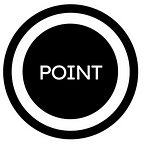What is Web 3.0?
The Internet as we know it has led to revolutionary changes in our world and our way of living in it. However, behind the scenes, the Internet is undergoing a radical paradigm shift of its own. With the advent of blockchain technology and decentralized cloud storage and cryptocurrency, we are currently on the verge of a new phase in the web’s evolution. Experts have called it Web 3.0.
So, what is Web 3.0? And why should you care? Well, to understand this, let’s take a deep dive into the evolution of the Internet and the changes that we have witnessed on the worldwide web over the years.
Evolution of the Internet
At the genesis of the internet, there was text, and web pages. In essence, internet users could only surf the web to read the content on websites that they visit. Content creators were relatively few, and a vast majority of users simply acted as consumers of content. — Let’s call this Web 1.0 or the “read-only” Internet.
Then came Web 2.0 which ushered in revolutionary changes in how we interact with the Internet. It enabled users to read content on websites and write their own text, images, and audio-visual content on these web pages and share the information with other users. — Experts call this the Server/Cloud-based Social Web.
Companies with massive servers and supercomputers have dominated Web 2.0. According to annual reports published by Cloud storage and Analytics giant, Domo, the internet saw 2.5 Quintillion bytes of data created daily in 2020. The bulk of this data is collected and stored by a handful of centralized data companies such as Alphabet, Amazon, Alibaba group, Facebook etc.
These companies provide the infrastructure required to store the astonishing volume of digital content that users share on the Internet daily. Consequently, they are able to wield significant global influence over the way that we perceive the internet.
This has proven to be both a blessing and a curse. And Web 3.0 is here to provide revolutionary solutions.
For instance, if you wish to purchase a laptop on the Internet:
Web 1.0 (the Read-only Internet)
Allows Laptop Company to post an Advert on their website, describe features of the computers they have. Then allows you to read information about the company’s phone number, and physical addresses where you can go to make the purchase.
Web 2.0: (the Server-based Social web)
Allows you to post the pictures and specifications of the laptop you wish to buy. Search engine brings up the Laptop store in the search results based on your search parameters and specifications.
Web 2.0 also allows the Laptop Company to have an online store on their website, where you can read details of the laptop, view pictures of different models, make comparisons, and place an order on the spot.
Finally, you get to post and store your reviews and feedback about the purchase for other users to see in the future.
Web 3.0: (The decentralized web)
With Web 3.0, the users would have the opportunity of exchanging goods or services of all sorts, such as the Laptop computer from the example. The company would be able to have its own landing page, where it could have a dynamic exchange of information with the users. If the user would decide to pay for the appliance, he could directly buy it from the company, without the need of any middleman payments service provider. By directly accessing their funds in their wallet and being able to make the purchase with a simple wallet transaction.
This would also be very beneficial for the company as they wouldn’t need to pay a commission to the payment gateway, just potentially the transaction fees.
This is a game-changer for users as it would allow them to truly benefit from a decentralized platform where they would be able to connect with each other without paying with their data, or their money to do it, offering a truly free marketplace with no limits or restrictions.
That, in a nutshell, is the philosophy behind web 3.0.
Defining Web 3.0
Web 3.0 is aimed at creating a fairer internet that gives power, autonomy and digital sovereignty back to the individual. True digital sovereignty implies that every individual should own and control the data that they create. Likewise, we should all be able to dictate to some extent, who profits from one's time and information.
Web 3.0 is a decentralized blockchain protocol-based internet that is expected to enable individuals to connect to an internet where they retain ownership of their data and be properly compensated for it. This would eliminate the exploitative and unjust web 2.0, where users are literally at the mercy of a handful of giant, centralized repositories who exclusively own and profit from all the data that is created.
Key features
·Decentralization powered by Blockchain.
·Cryptography and data protection.
If you wish to stay updated and learn more about Web 3.0 and Point Network you can join our community: https://t.me/pointnetworkchat
You can also visit our official website: https://pointnetwork.io/
